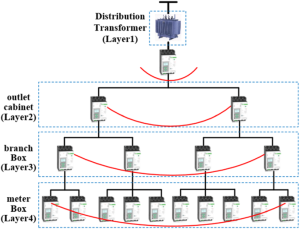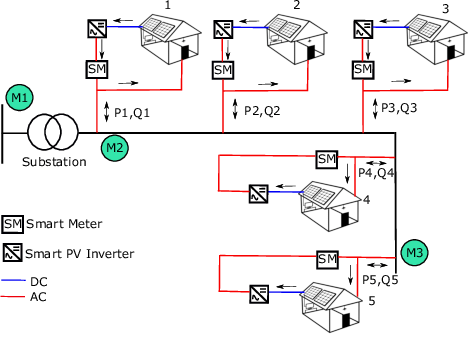Introduction to Low Voltage Network Cabling
Are you tired of dealing with messy and unreliable network cabling systems? Look no further! Low-voltage network cabling is here to revolutionize the way you connect and communicate. This comprehensive guide will delve into the world of low-voltage network cabling, exploring its different types, benefits, and installation considerations and debunking common misconceptions. Get ready to discover how low-voltage network cabling can enhance your connectivity experience like never before!
What is Low Voltage Network Cabling?
Low-voltage network cabling refers to the installation of data and communication cables that operate at low voltage levels, typically 50 volts or less. These cables connect electronic devices such as computers, telephones, routers, and cameras to a central network or server.
Types of Low Voltage Network Cabling
- Ethernet Cables:
Ethernet cables are the most commonly used type of low-voltage network cabling. They come in various categories, each with bandwidth and speed capabilities. The most common types are Cat5e, Cat6, and Cat6a.
- Coaxial Cables:
Coaxial cables are another low-voltage network cabling often used for TV and internet connections. They have a copper wire core surrounded by insulation and shielding materials.
- Fiber Optic Cables:
Fiber optic cables transmit data over long distances at high speeds using light pulses. They are made up of thin strands of glass or plastic fibers encased in protective coatings.
Benefits of Voltage Network Cabling
Reliability: Low-voltage network cabling systems are highly reliable and can handle large amounts of data without experiencing interference.
Understanding the Different Types of Low Voltage Cables
Regarding low-voltage network cabling, various types of cables serve different purposes. One common type is twisted pair cables, which consist of pairs of insulated copper wires twisted together to reduce electromagnetic interference. These cables are commonly used in Ethernet networks for data transmission.
Another type is coaxial cables, with a single copper conductor at the center surrounded by insulating material and a braided metal shield. Coaxial cables are known for their high bandwidth capabilities and are often used in television and internet connections.
Fiber optic cables are also widely used in low-voltage networking due to their ability to transmit data through light signals. These cables consist of thin strands of glass or plastic fibers that can carry large amounts of data over long distances with minimal signal loss.
Each type of low-voltage cable has its own strengths and weaknesses, so it’s important to choose the right one based on your network setup’s specific requirements.
 Advantages of Using Low Voltage Network Cabling
Advantages of Using Low Voltage Network Cabling
Low-voltage network cabling offers a myriad of advantages that make it a top choice for modern businesses. One key benefit is its cost-effectiveness, as low-voltage cables require less material and are easier to install than traditional high-voltage wiring systems.
Additionally, low-voltage network cabling is known for its enhanced safety features. Since these cables carry less electrical current, the risk of fire hazards and electrical shocks is significantly reduced, promoting a safer work environment for employees.
Moreover, low-voltage cabling enables greater flexibility and scalability in network design. Businesses can quickly expand or reconfigure their networks without significant renovations or disruptions to daily operations.
Furthermore, low-voltage cables are more energy-efficient than high-voltage alternatives, leading to lower utility costs. By reducing power consumption, companies can contribute to their sustainability goals while reducing expenses.
Installation and Maintenance Considerations
Proper installation and maintenance are key to ensuring optimal performance in low-voltage network cabling.
During the installation process, the layout must be planned carefully to avoid interference or potential hazards. This includes identifying the best routes for cables and implementing proper cable management techniques.
Additionally, choosing high-quality components and following industry standards can help prevent future issues and ensure a reliable network connection. Regular maintenance checks should also be conducted to detect signs of wear or damage early on.
A structured approach to troubleshooting can save time and resources when addressing connectivity issues. It’s also important to keep detailed records of installations and maintenance procedures for reference in case problems arise.
By prioritizing installation quality and proactive maintenance measures, you can maximize the efficiency and longevity of your low-voltage network cabling system.
Common Misconceptions about Low Voltage Cabling
There are common misconceptions surrounding low-voltage network cabling that need to be addressed. One of the most prevalent myths is that low-voltage cables are not suitable for high-performance networks. This couldn’t be further from the truth, as advancements in technology have made low-voltage cabling a reliable and efficient option for various applications.
Another misconception is that low-voltage cabling is the same as traditional telephone wiring. While both types of cabling use copper wires, they serve different purposes and have different specifications. Low-voltage cabling is designed specifically for data transmission and can handle higher bandwidths and faster speeds.
Some people also believe that low-voltage cabling is only suitable for small networks or short distances. This is not accurate, as low-voltage cabling can be used for large networks spanning long distances without compromising performance.
There is also a misconception that low-voltage cabling cannot support power over Ethernet (PoE) devices. However, many modern low-voltage cables are capable of carrying both data and power, making them ideal for PoE applications.
Low Voltage Network
Lastly, there is a misconception that cabling is not durable or reliable. While it may not be as robust as high-voltage cables, low-voltage cabling is still built to withstand wear and tear and provide reliable connectivity for years to come.
It’s essential to educate yourself on the capabilities and benefits of low-voltage cabling before making any assumptions about its limitations. With proper installation and maintenance, low-voltage cabling can provide a cost-effective solution for various networking needs.
Another misconception is that low-voltage cabling is less secure than traditional wiring methods. In reality, low-voltage cables are designed with security features to prevent data breaches and ensure data integrity. Additionally, some believe that installing low-voltage cabling is complex and time-consuming. However, with proper planning and professional installation, setting up a low-voltage network can be streamlined and hassle-free.
It’s also important to debunk the myth that using low-voltage cabling will result in poor connectivity or slow network speeds. On the contrary, low-voltage cables can provide fast and stable connections when installed correctly. By understanding these misconceptions, we can make informed decisions about implementing low-voltage network cabling for our technological needs.
Conclusion
Low-voltage network cabling offers a myriad of benefits for modern businesses and organizations. From providing efficient data transmission to enhancing network reliability and scalability, low-voltage cables are essential in today’s digital landscape. By understanding the different types of low-voltage cables available, considering installation and maintenance factors, and debunking common misconceptions, businesses can maximize the advantages of low-voltage network cabling. Embracing this technology improves connectivity and sets the foundation for future growth and innovation in an increasingly interconnected world.







